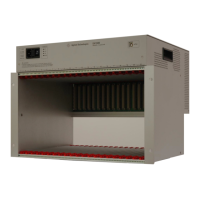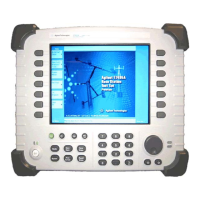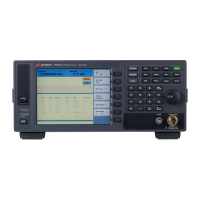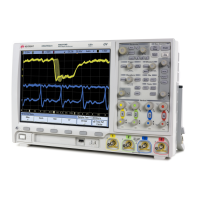70 Chapter2
Programming Fundamentals
Using the Instrument Status Registers
What are the Status Registers?
The status system is comprised of multiple registers which are
arranged in a hierarchical order. The lower-level status registers
propagate their data to the higher-level registers in the data structures
by means of summary bits. The status byte register is at the top of the
hierarchy and contains general status information for the instrument’s
events and conditions. All other individual registers are used to
determine the specific events or conditions.
Most status registers are actually a family of five registers:
Condition A condition register continuously monitors the
hardwareand firmware status of the instrument. There
is no latching or buffering for a condition register. It is
updated in real time.
Negative
Transition A negative transition register specifies the bits in the
condition register that will set corresponding bits inthe
event register when the condition bit changes from 1 to
0.
Positive
Transition A positive transition register specifies the bits in the
condition register that will set corresponding bits inthe
event register when the condition bit changes from 0 to
1.
Event An event register latches transition events from the
condition register as specified by the positive and
negative transition filters. Bits in the event register are
latched, and once set, they remain set until cleared by
either querying the register contents or sending the
*CLS command.
Event
Enable An enable register specifies the bits in the event
register that can generate a summary bit. Summary
bits are, in turn, used by the next higher register.

